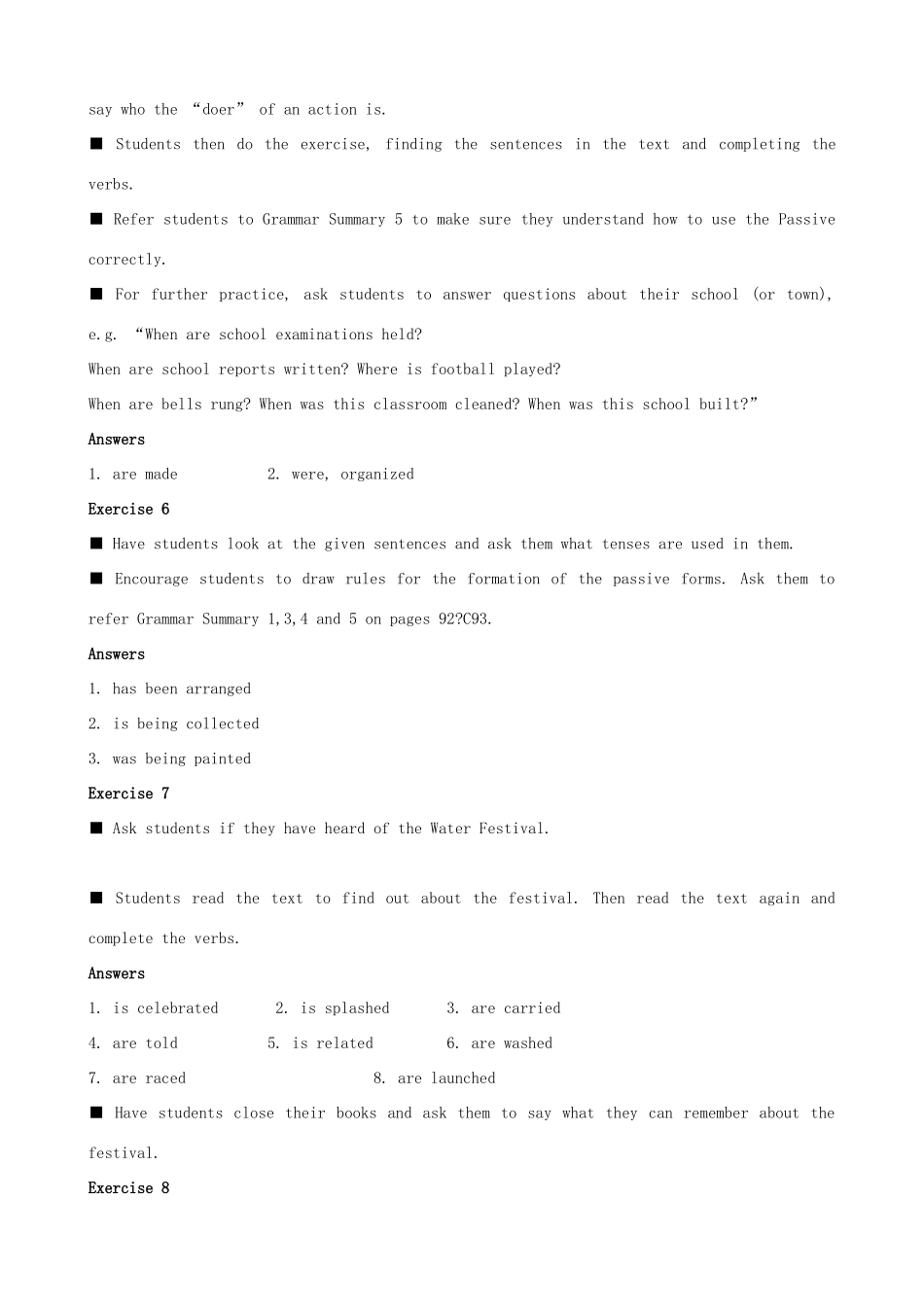《unit 3 lesson 1 Chinese Seasonal Festivals》教学指导Objectives ■ To use pictures to help understand new words and to use the dictionary to check meanings. ■ To read a text quickly to find specific information. ■ To practise the Present Simple Passive, Present Continuous Passive, Past Simple Passive, Present Perfect Passive and Past Continous Passive. Resource used Grammar Summary 5. Possible problems Students should be encouraged to use the Passive. It is used more in English than in many other languages. Background Communal celebrations mark events such as changing seasons, religious days or political events; music, dance or costume are usually involved. Routes through the material ■ If you are short of time, set some of the exercises for homework. ■ If you have time, use one of the Options ideas. ■ If you have two periods for this lesson, a suitable natural break is after Exercise 4. Language Power: pages 76?C77. Mini-Grammar 9 Reading Before you start Exercise 1 ■ Students look at the pictures and guess what is happening and what is being celebrated. Ask them to describe what they can see. ■ Students discuss what their favourite seasons are and list the festivals in China which are associated with each season. Read to learn Exercise 2 ■ Students look at the three titles (Summer, Autumn, Winter) and suggest which festivals are associated with these three seasons in China and if there are any associated with Spring. ■ Students read the texts quickly and do the matching. Answers Picture 1?CC the Dragon Boat Festival Picture 2?CA the Mid-Autumn Festival Picture 3?CB the Lantern Festival Exercise 3 ■ Divide the class into three groups. Each group reads one section of the text...


